If you go on social media, you’ll see it everywhere: “This month we tripled our revenue” or “We increased our client’s leads by 298%.” Interesting, you think. So you scroll down and realize that while the percentages looked impressive, their numbers were low (no wonder they tripled results).
Growth strategy and results look different for everyone.
For example, a wholesale real estate agent that makes two or three luxury property sales a month might be successful, but a SaaS that processes three subscriptions at $30 per month isn’t. Metrics and results vary across industries, types of solutions, and your target audience. Real estate mobile app development can be an important tool for real estate agents to connect with clients and showcase properties, and the time and resources required for this can also be tracked using productivity software like RescueTime.
That’s why it’s essential to understand what kind of growth strategy you need, how to improve it, and how to continuously build your plan for long-term results.
And here’s a preview: It’s not about how fancy and solid your game plan is. It’s something far more authentic and actionable. Your company doesn’t need to make a significant investment but rather leverage the right solution to increase growth with your target market.
What is a SaaS growth strategy?
A growth strategy should provide clear parameters and goals for a company’s long-term success.
Growth strategies often involve specific benchmarks based on user acquisition, user adoption, customer lifetime value, customer life cycle, revenue, and overall customer satisfaction.
Companies can lead successful growth strategies by putting customers first and improving the app’s experience, onboarding, and value. Strategies also involve branding, positioning, and messaging. They can include mergers and acquisitions, as well as partnerships.
Furthermore, companies can select or combine multiple growth categories customized for their business goals, such as sales, marketing, customer service, and product. Finally, they should conduct a gap analysis to identify and address any resource shortfalls, ensuring their growth strategies are well-supported.
Types of growth strategies
There are many ways to initiate business growth strategies—the issue is picking the right one for your SaaS business. You want a plan that gives you the highest relevant ROI.
Plans often focus on the following growth strategy examples:
- Market penetration strategy: when a company sells more of its products to those already in its existing market (to increase market share)
- Product development strategy: when a company creates a new product
- Diversification strategy: when a company decides to make different products and offerings instead of sticking to its core solution
- Market development strategy: when a company tries to sell its existing products to new groups of people or in new places where it hasn’t sold them before (or a market expansion strategy)
And while these are some areas in which a company can grow, companies often fail to focus on the most impactful (and more affordable) strategy: improving the product and experience.
If you get those things wrong, it doesn’t matter which market you enter or how many features you add. If customers get frustrated or don’t understand your app, then you can’t grow.
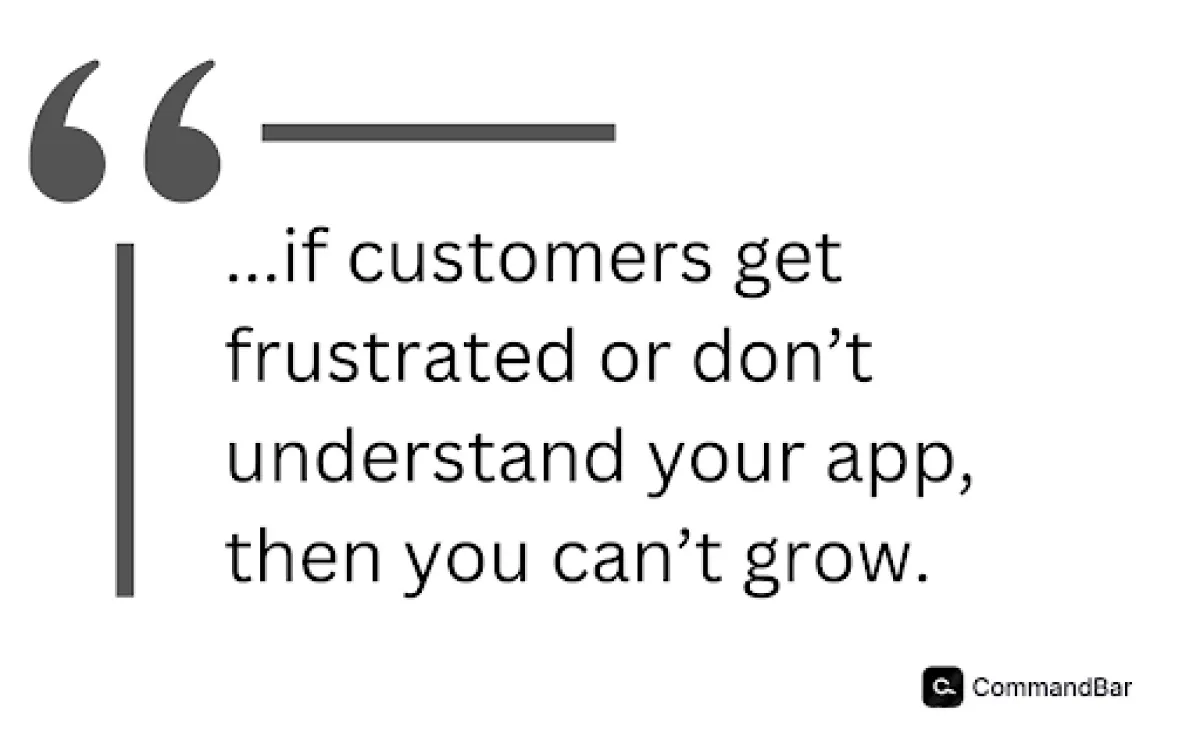
Once your product is so remarkable that customers can’t help but share it, and they love it so much that they continue using the app, you start growing.
Your customer acquisition rate increases, your customer churn rate decreases, and your customer retention rate increases, too.
Companies can improve the product experience by creating personal journeys inspired by the following questions:
- Who are your users? You should have a clear user segmentation chart, followed by cohort analysis studies, to know your different types of users based on acquisition channels and behavior.
- What do they need? You should know precisely why the user group needs your app and direct the customer to the desired feature and outcome.
- Why does it matter? Define the greater purpose of the solution. For example, if the customer wants to send an invoice to their client, you might learn that they believe the easier billing provided by your product will help them get paid faster. You can lean into that feeling and create more experiences (and marketing messages) based on that.
- How can it be provided? Build the onboarding experience, including the specific features, to satisfy the needs of the target audiences you have.
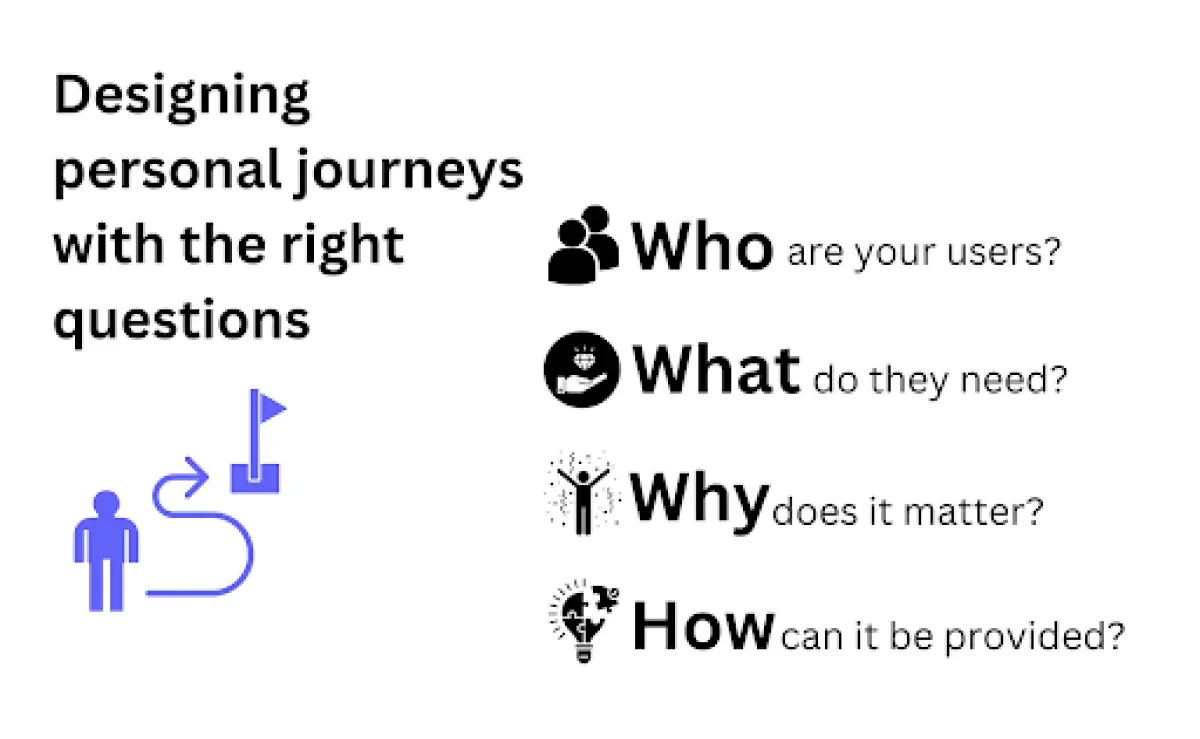
By asking these questions and creating user segmentation based on their customer profiles, you can provide what users need when they need it.
A big part of this concept should be implemented in the onboarding strategy. If a customer wants to use your product for a particular solution, find out what that solution is and get them to that outcome immediately. This proves your value and wins over your customers.
Foundations of a scalable, product-led growth strategy
You can spend five hours building a beautiful sandcastle in the morning, but as soon as the tide rises or little Jimmy comes in with a beach ball, your castle’s going down.
It’s the same with your growth strategy. You need a solid foundation before you can expand on your plan. Otherwise, nothing works together, and everything falls apart.

For example, you may have found an off-the-charts method of marketing to customers and capturing new leads. But if your customer onboarding experience is horrible, customer acquisition success doesn’t matter.
Review the following growth strategy checklist and ensure you’re ready for the next level.
1. Build your product around the customer
If you’ve watched Shark Tank, you might recognize this scenario. An anxious entrepreneur is standing before a group of would-be investors, or “Sharks.” The entrepreneur has put their life savings into a new product, sold a few units, and presented their case to the Sharks. The Sharks ask why someone would even need that product in the first place, then tell the entrepreneur it’s irrelevant.
Door closed.
Dreams crushed.
Unfortunately, in this entrepreneur’s case, it’s not that they made the wrong product or are bad at business. The issue is that they created something for a problem that didn’t exist. Or, at the very minimum, the problem didn’t exist enough for there to be demand for the product they were pitching. The entrepreneur built the product first without considering what customers wanted.
SaaS companies often do the same thing. They have a great idea for a feature, build it, and launch it to the market. Customers jump in, get confused, and then wonder if it’s worth their time and money.
If companies can instead adopt a business growth plan based on the customers first, they can increase their customer satisfaction and improve their customer adoption rate.
When companies can create an intuitive experience that feels familiar to users, this is one way they can grow.
That means during the onboarding process, apps don’t force customers to experience what the company wants first. Instead, customers follow personalized journeys that show them the exact features they need to reach time-to-value, or the aha moment.

Additionally, you can improve your growth strategy by analyzing deadends in the customer experience.
For example, if a company uses your universal search and you don’t offer a clear answer, you can use that insight to add the feature they were looking for and adjust your app or feature based on common frustrations.
Or, if users leave your app at a certain point, you know it’s time to improve the user experience.
However, techniques like these are only possible with tools that can help you identify these interactions.
Leveraging a platform that allows you to build your app around the customer is the best way to analyze customer behavior, deploy onboarding and customer adoption features, and improve your growth strategy.
2. Establish a bulletproof product value proposition
“I offer the best solution,” the SaaS says on its website. The user: “OK, cool. So does everyone else.”
If companies can’t clearly state their value (and communicate the right benefit for the audience), then all growth strategies will fail.
The best way to develop accurate value propositions is to get to know your customers and ask them questions. You should know your target audience, their pain points, and the number one reason they need your solution.
Then, these companies can use their product adoption platform to analyze user behavior, collect surveys, and improve the product and how they communicate the value.
SaaS should also use video CMS and offer video walk-throughs and product demos to demonstrate the value through a face-to-face POV experience. Using a tool like Loom or Veed, you can record a core feature or, better yet, show your use case value for your home page and each relevant marketing page.
For example, in the video below, a team member records a scenario where someone could do a walk-through for a very specific use case.
Finally, the best way to have a solid value proposition is to prove it to your customers firsthand. Once you have earned the trust of your audience and they sign up for your app, you only have a couple of minutes for customer activation and to prove your worth.
The faster a customer experiences the aha moment, the better you can support your unique value proposition. These experiences should be highly personalized based on onboarding micro surveys, such as asking users why they want to use your app.
If a customer says they want to create a graphic to share with their company’s social media audience, don’t force them to send collaboration invites to their team. Asking the right questions to direct them to a specific use case avoids frustrating user journeys and gets the customer to the feature that leads to their adoption.
3. Create growth milestones that get you out of bed in the morning
You should have realistic but challenging strategic growth initiatives that excite you. Sustainable growth brings many opportunities, such as more customers, more income to support you or your family, resources to build better and more products, and the ability to solidify your place in the market. Use these motivations and growth metrics to help you achieve your goals.
You can use the SMART framework to get you started:
S: Specific: State a clear growth goal.
M: Measurable: Create a trackable process.
A: Attainable: Make it realistic.
R: Relevant: Verify it’s the right fit for your company.
T: Time-bound: Define timely parameters like a deadline or date range.
Use this framework and review some of your growth-focused metrics like conversion rates, website visitors, and email sign-ups. Or look for in-app growth signals such as feature usage rate, customer adoption rate, subscription upgrades, and more. If you don't have an in-house team to deal with this, you can find WordPress or Webflow agencies on Vezafy to outsource the work.
Perfecting your scalable go-to-market plan
When you’ve built a solid user-first foundation, it’s time to put things into action with a marketing growth strategy.
Brands can focus on a few growth tactics to attract new customers:
- Create a referral program: Engage with your power users and ask them to share a referral with friends in return for a reward or gamified customer loyalty point system.
- Invest in search engine optimization (SEO): Use a SERP API to see what your competitors post on their blogs and study buyer-intent-focused keywords. Then, publish SEO-optimized content that provides value, increases your reach, and invites visitors to try your app. Additionally, analyze their strategies by using tools to find competitor backlinks, which can help you identify valuable opportunities for your own link-building efforts.
- Build a social media marketing campaign: Hold a contest, run ads, and apply various outreach campaigns to attract new users and build an audience.
- Promote a free use case experience: Make a feature accessible and give users access through a direct link to get immediate use case value.
The key is to be willing to experiment, try new things, and find out what works for your company. Ultimately, what can help the most is to foster a culture and growth strategy for learning and implementation.
The Lean Startup Model tells us to learn, build, measure the results, and then repeat the three-step process. And that’s the approach SaaS companies should use.
Leveraging data for informed decision-making
As you develop your growth marketing strategy, it is essential to ensure that it is based on actual information and designed for your unique users and audiences.
When accurate data meets actionable insights, teams can build better strategies that produce results such as new users, customer happiness, and even ways to increase sales volume.
Lucas Howard of Command AI talks about the common pitfalls of building growth strategies:
“There are two extremes in growth strategy that often lead to failure. One extreme is ‘analysis paralysis,’ where a team over-indexes on strategy. At some point, the rubber has to meet the road.
“The other is believing that a team knows their market and users without adequate data...teams end up designing, building, and marketing a feature that underperforms.”
As Howard implies, we want to answer the following questions: What do customers need based on information? How can we implement it with an action plan?
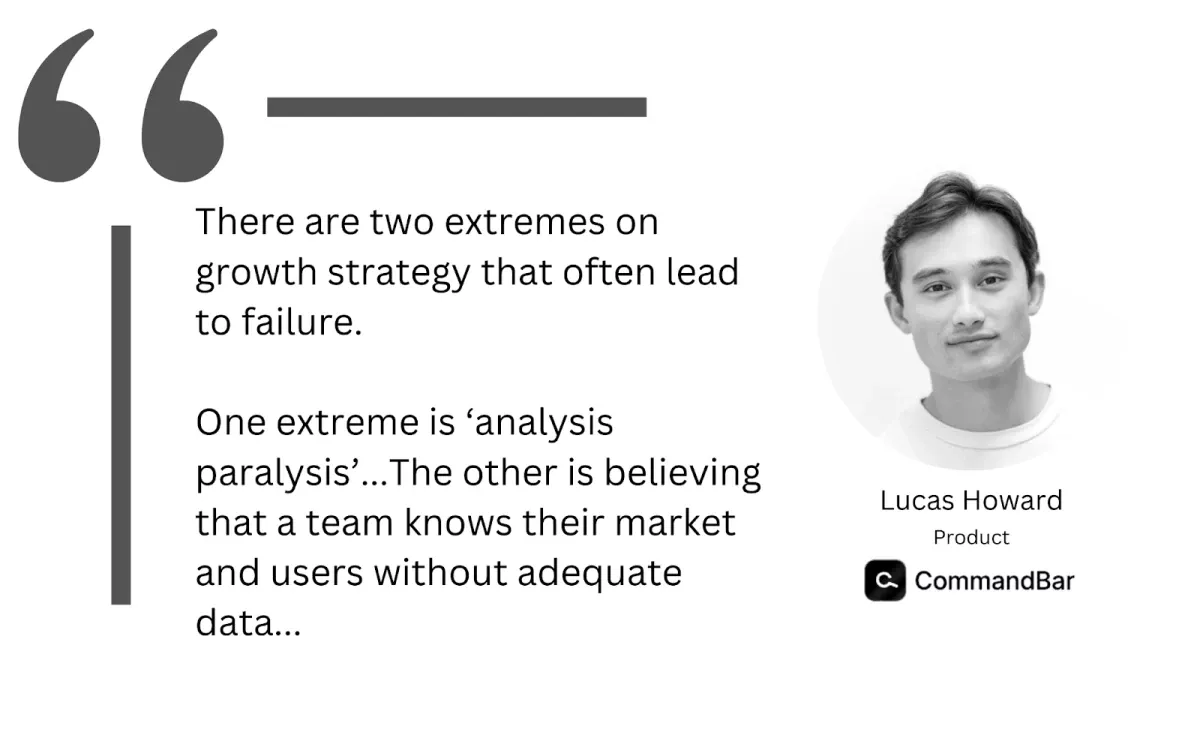
An onboarding and user experience platform should be able to gather metrics and behavioral data to help you better understand your customers.
But it’s critical that you first decide what data is relevant.
We live in the Information Age, and there are tons of details you can collect, analyze, and use to implement a growth strategy. However, it’s easy to fall for irrelevant information in the chaotic mass of information.
Instead, businesses will get better results using SaaS customer experience platforms to identify the key metrics and information they know to move the needle.
Howard continues his remarks, stating, “Rarely is the data an exact match. You should consciously decide whether [it] is significant or not.”
For example, you can identify a specific need customers are searching for within your resource hub or through tickets they open with your customer support team.
You see that the specific need customers are searching for is a common one, and it clearly signals that customers want that particular feature or adjustment.
Customer success: The unsung hero of SaaS growth
One of our team members at Command AI recalled a story about an experience he had years ago in Latin America. He had some friends that opened a Chipotle-style restaurant in Bolivia.
When he visited the quick-service restaurant, he immediately identified the famous food line most of us are familiar with. Customers pick a base (like a flour tortilla or white rice) and continue down the line of options, choosing which kinds of additions they want in their meal.
The owners executed the model perfectly. But the experience ran differently.
They recounted how at first, the customers didn’t know what to do. At that time, this kind of business model was rare in the country. The guests sat down, expecting a traditional restaurant-service experience.
If the owners had not had the awareness and strategic mindset to spot this customer confusion, they might have kept pushing forward until the business failed.
But they adapted.
They kept the food line up. But they didn’t force the experience.
The owners, two brothers, invited customers to sit down. They presented the menu and offered to bring the food to the table. Little by little, they educated customers on how quickly their food could be customized if they went through the line. Over time, the customers understood the concept and enjoyed the restaurant.
The brothers would not have been successful if they had not prioritized the customer experience and leveraged customer feedback to pivot and adapt where necessary.
The lesson: Increasing customer success is the best effective growth strategy a B2B SaaS company can adopt. Companies looking to engage their audience might find value in leveraging personalized content, as showcased in growth strategies. To further amplify this, companies could benefit greatly from exploring this guide about personalized videos which offers an in-depth look at utilizing tailored video content for improved user engagement and customer satisfaction.
It’s not an oversimplification. The more happy customers you have, the more new customers you will attract.
Companies adopting a user experience and product adoption platform can deploy features that help the user’s journey as they get to know your app.
Instead of annoying popups, you can include nudges that gently point users in the right direction. Questlists offer an exciting and gamified experience that takes users through a personalized journey to activation. Whatever their use case needs are, your app can take them to that specific goal.
Platforms can also implement universal search. This allows users to explore resources more deeply and use AI chat assistance. A platform can also conduct surveys to better understand users to provide the support they need.
It's also very powerful to add a user assistant like our Copilot into your product. Not only does this do the obvious in alleviating strain on your customer success team and deflecting tickets because users can now get answers to their questions from the AI, but it also provides you a lot of insight into the areas where folks are repeatedly running into dead ends, where your help documentation is not robust enough to allow Copilot to provide a proper answer.
Copilot chat mock-up
This can help you improve not only your docs, but also your product itself altogether.
Loop
Furthermore, you're able to get more insight into what your users are asking about, how they're talking about your product, and generally improve your user journey map and user personas and turn that into more actionable product intelligence.
For example, in this Deadends dashboard you can see every question where your users hit a wall and were unable to get an answer:
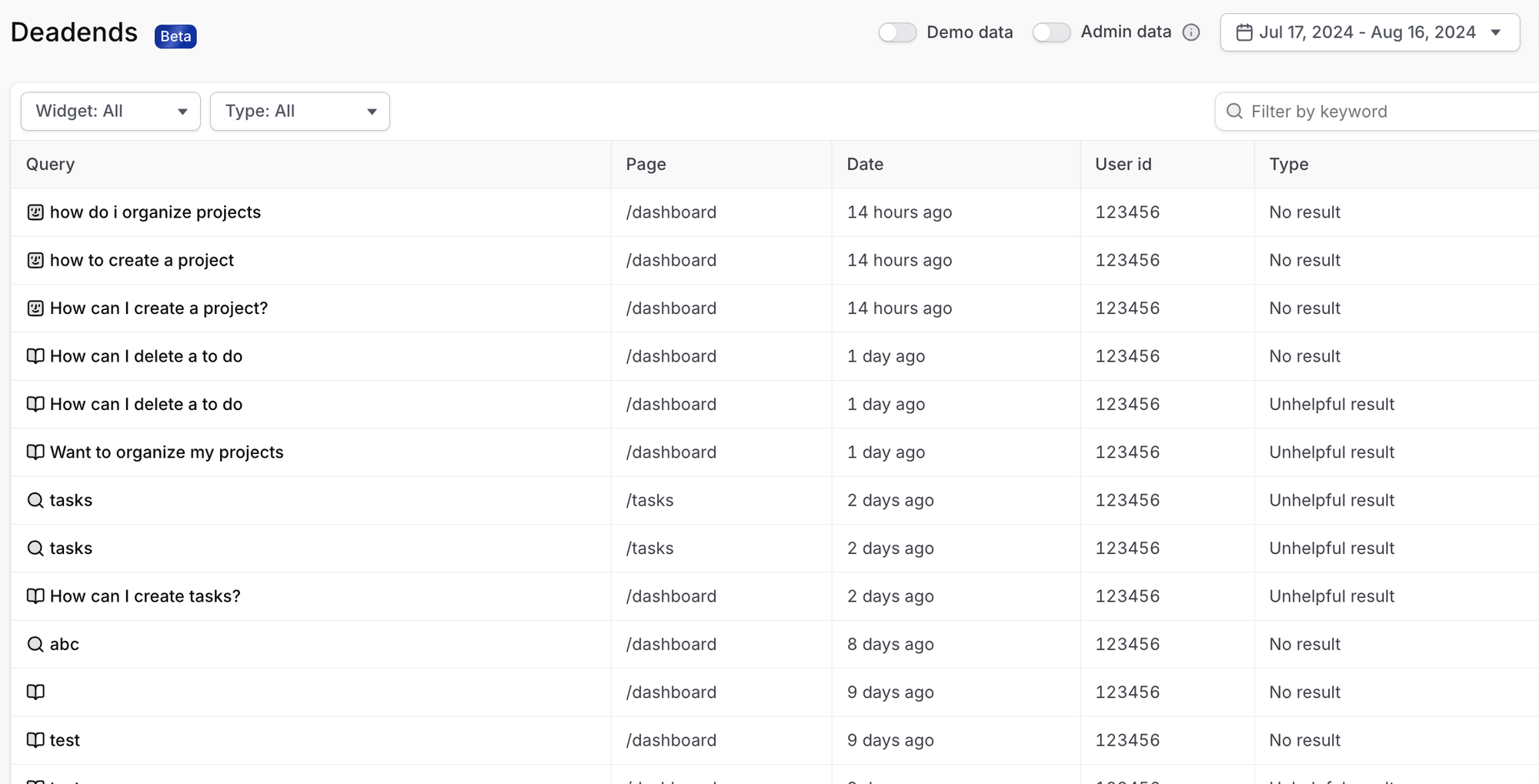
Let’s talk pricing for growth

Say you’re in junior high and your dad asks you to repeat your question as he finishes his last bite of linguini. You repeat: “I was wondering if you’d buy me the new Xbox.” And then the dreadful, climactic question comes up, which you were hoping wouldn’t come up but was inevitable: “How much is it?” End of story.
Pricing can make or break your product growth. Compare your product with those of similar companies growing within the market. See how their products are priced and how the companies communicate their value.
Often, it’s not even about the sales price but how you communicate or structure it. If you have tiers, state the features you include, but also include the emotional benefits.
For example, if you have an AI feature, don’t name the technical term or action and leave it there. Tell users they will save time or easily scale so they can accomplish more.
Many SaaS companies use freemium models, but converting free users into paying customers can be challenging. You spend considerable energy on acquisition and supporting the free user customer base, but the rewards are minimal.
Instead, you can shift your energy into a free trial with personalized customer activation, nail down your value proposition, and communicate effective pricing.
One creative example is how Typeframes, the product text-based video generation app, has a direct page where users can try its tool’s use case. You add your inputs, and it creates your text-based video. You can try the app in seconds to see if you like it.
Typeframes gets you to the aha moment in seconds, and you can subscribe to the app as a paid user to continue benefiting from the tool. It’s a no-risk experience for potential customers, and the solution proves its value in seconds.
Tibo Louis-Lucas, the platform’s owner, stated to Command AI, “You need to make your app quickly show its unique touch so the user is willing to invest [their] precious time in learning about what you do.”
Experimenting with your pricing and acquisition strategies to see what works and how you can improve is essential.
Your first-party data is the most valuable information, and you can leverage conversion metrics, heat maps, bounce-rate statistics, long-term customer adoption rates, and other insightful metrics to measure your price and value relationship with customers.
The importance of a powerful user assistance platform
The best way to gather relevant data, deploy the features to guide customer experiences, and learn from behavior is by adopting a platform that does it all.
By keeping everything in one place and leveraging a powerful tool, you can better understand your customers and improve your product and experience.
You can create an app that users love through intuitive onboarding, engaging user experiences, and providing multidimensional resources for deeper learning. Once customer satisfaction increases, you decrease churn, improve retention, and lead a successful business growth strategy.
Unleash the power of a growth strategy tool
But here’s the ugly truth: not all customer experience platforms are created equally.
Often, they only do one or two things. One might gather data. Another might provide customer-facing features to support your users. All of these fragmented tools make things messy and harder to grow when you have disorganized information and you need to manage it all.
Or, you could find a tool that does it all. But it’s too loud. It makes you jump out of your seat with an annoying popup. When you go through a product tour, you want to have options such as skipping steps, watching videos, or just reading—but the app forces you to do it its way with no wiggle room.
These forced experiences can push customers away and harm your platform health.
Instead, a user assistance tool like Command AI can provide personalized tools based on why your customer wants to sign up. Users go through a customized journey based on their curiosities and preferences, which gets them to the aha moment. If your app needs to provide important information, it can send a gentle nudge instead of a popup to encourage users to learn more.
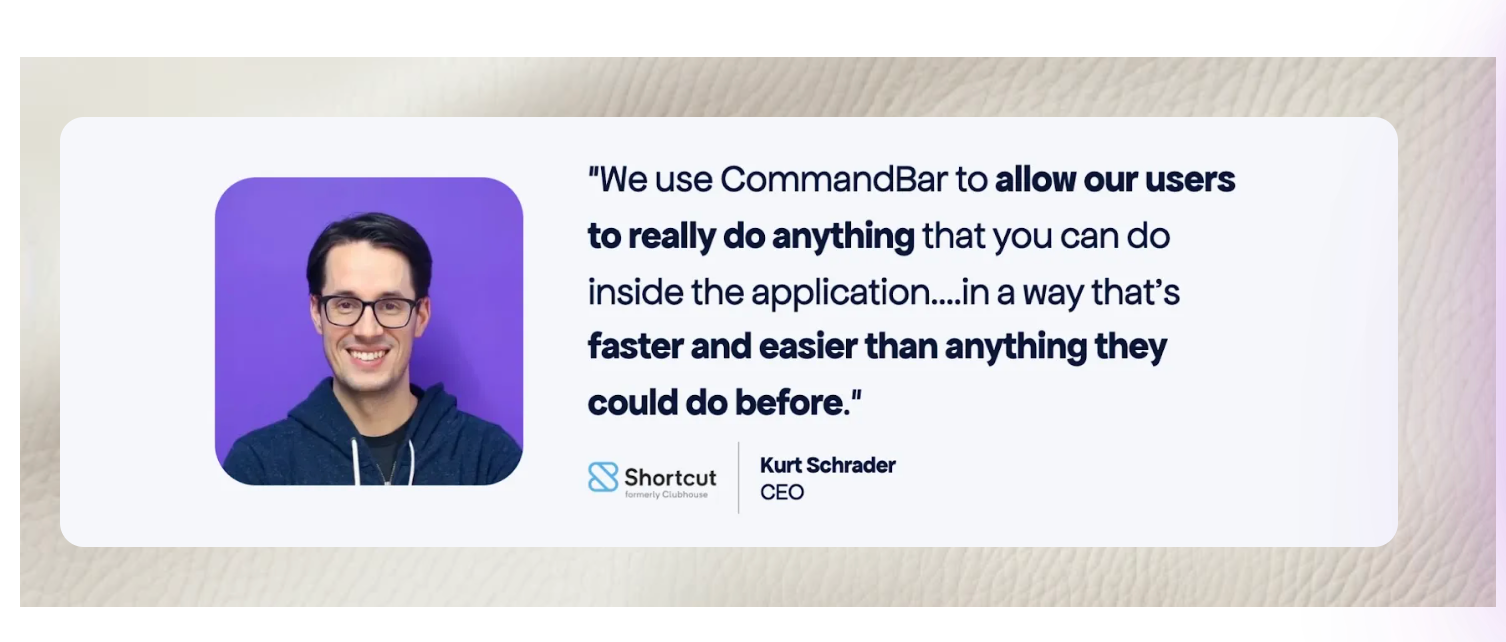
The future for better growth strategies is less about what the app wants and more about what the customer wants. When we put the customer experience first, we can improve our product, get new customers, and grow.

















